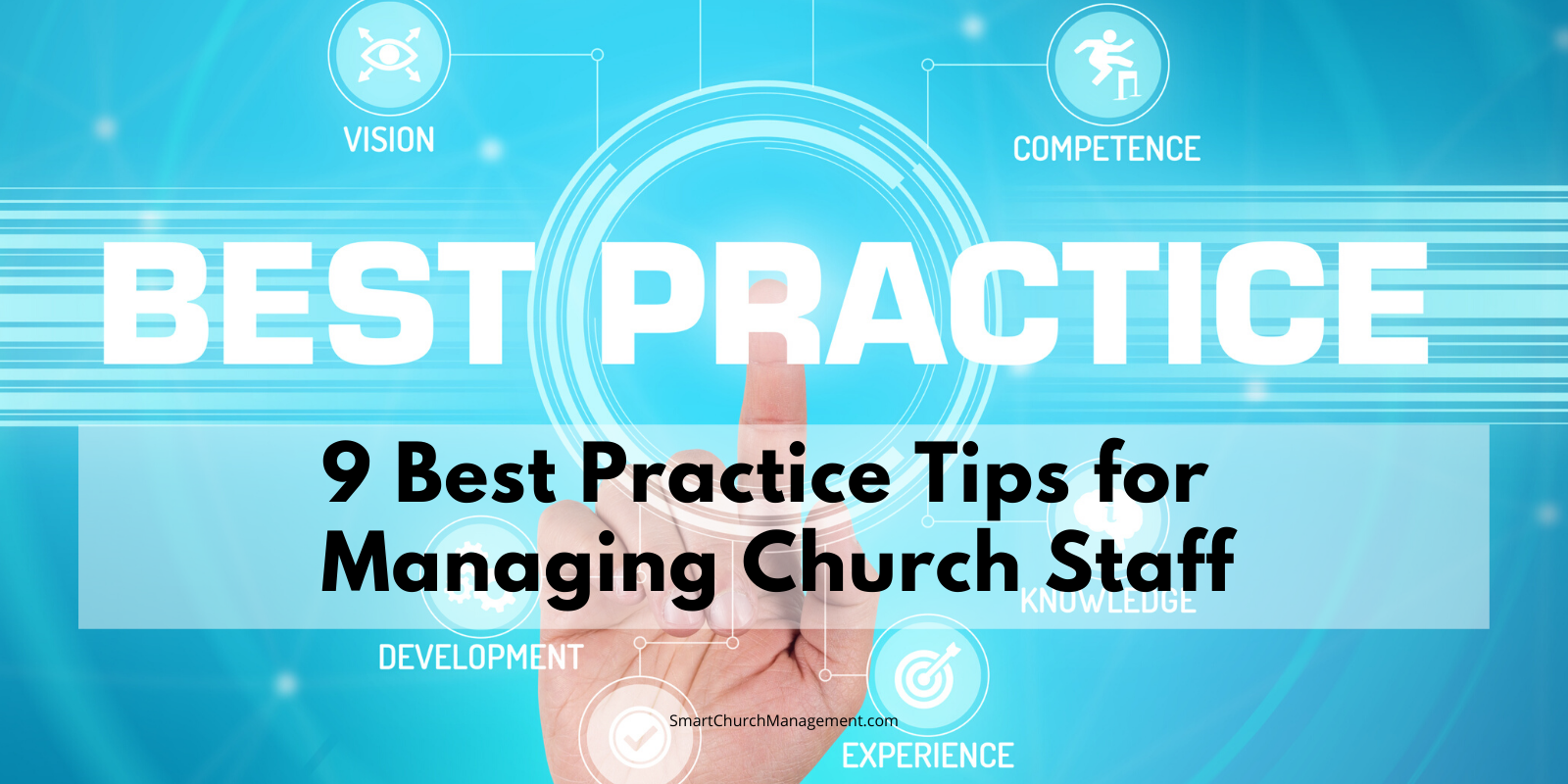Estimated reading time: 5 minutes
Managing a church staff is no different than managing employees in other environments.
Church leaders can learn from other industries and take advantage of management best practices.
All employees desire the same things when going to work – regardless of job title or industry.
They want to know what is expected of them, they need to be given the tools and resources to perform their job, and they want to be recognized and rewarded for meeting expectations and getting the job done.
Those of us who manage church employees can learn what works in other organizations and glean from best practices.
9 Best Practice Tips For Managing Church Staff
1. Employees Have Clearly Defined Goals
Employees like having a job description that defines exactly what their responsibilities are and what they are expected to do.
The job description should also specify employee goals that support church strategy.
For example, if a church has a goal to improve the volunteer experience, the corresponding employee should have goals to support that objective.
That employee goal might be to solicit feedback from volunteers and develop an improvement plan – based on that feedback.
2. Clear Job Expectations
After employee goals are established, there should be a conversation with the employee articulating the expectation for the goal and outlining the step-by-step process to complete the goal.
This step allows for a conversation with the employee about any possible barriers to completing the goal, communicating the expected timeline for the goal to be accomplished as well as what the consequences will be if that expectation is not met.
For example, Linda Smith might have a goal to solicit feedback from volunteers by the end of the 2nd quarter, 20XX, and have an improvement plan in place by the end of the 3rd quarter, 20XX.
If Linda misses these goal targets, it should be communicated that it will be reflected in her annual performance appraisal and possibly impact the percentage increase she receives at the next raise cycle.
3. Detailed Job Description
A detailed job description helps employees know what their responsibilities are, who they report to, and what their expected day-to-day tasks are.
This detailed document helps employees understand the scope of the job and how it supports other aspects of the ministry.
Job descriptions are evolving documents and should be reviewed and updated once a year to reflect changing goals and objectives.
4. Tools To Perform Job Tasks
It is difficult to perform the job with inadequate, outdated, or broken equipment.
Whether the employee cleans the restrooms, answers the telephone, or oversees the music ministry, all employees need tools to perform their jobs.
If the custodial person is trying to clean with a broken vacuum cleaner, it causes undue frustration and slows the cleaning process.
Updating tools and equipment that help the employee do their job should be planned for and incorporated into the annual budgeting process.
5. Remove Barriers To Perform The Job
It’s an unfortunate reality, but it is often those who manage people who slow the work process by putting unnecessary barriers in the way of employees performing job tasks.
Learning to delegate and empower employees to make decisions about how their work is performed can help eliminate roadblocks in the process.

For example, the maintenance supervisor should be empowered to make purchasing decisions about needed supplies and equipment – up to a certain dollar amount.
This allows the department to respond quickly to changing needs and address issues as they arise.
6. Mentoring And Coaching
Employees should have the advantage of ongoing mentoring and coaching.
This one-on-one feedback process helps staff to develop professionally and grow in their jobs while developing their own leadership skills.
7. Fair Compensation
People who work for churches deserve to be paid fairly.
And while church employees don’t work for a church expecting to make a lot of money, they should be compensated fairly.
This entails creating a compensation strategy and benchmarking church salaries to ensure there is comparable pay for comparable job responsibilities.
8. Good Communication
Employees are the engine of the church, and good communication processes can help keep them engaged.
The process of communication is important because it sets the expectations for how information is shared.
This process should be structured enough that those receiving the communication can reasonably predict how and when information is received.
For example, if the church board is planning a capital campaign for an expansion project, employees should have a good understanding of the plan so they can help answer church member questions.
The communication process is not as important as its consistency.
The secret to effective communication is to answer the questions before they are thought of! This simple step eliminates confusion and unnecessary inquiries.
9. Reward And Recognition
Church employees work hard and should be rewarded and recognized for their efforts.
Creating a reward and recognition program can be a great way to help staff feel valued and appreciated.
This kind of recognition should be part of the annual merit increase process as well as other forums for recognizing a job well done!
Employees come to work and want to do a good job. However, they are often at the mercy of those who manage them.
Church leadership is responsible for designing work environments that empower and support employee productivity.
This means providing good communication, removing barriers to getting the job done, and reinforcing it all with rewards and recognition.
These small efforts can help employees stay engaged while performing at higher levels and achieving greater results.



